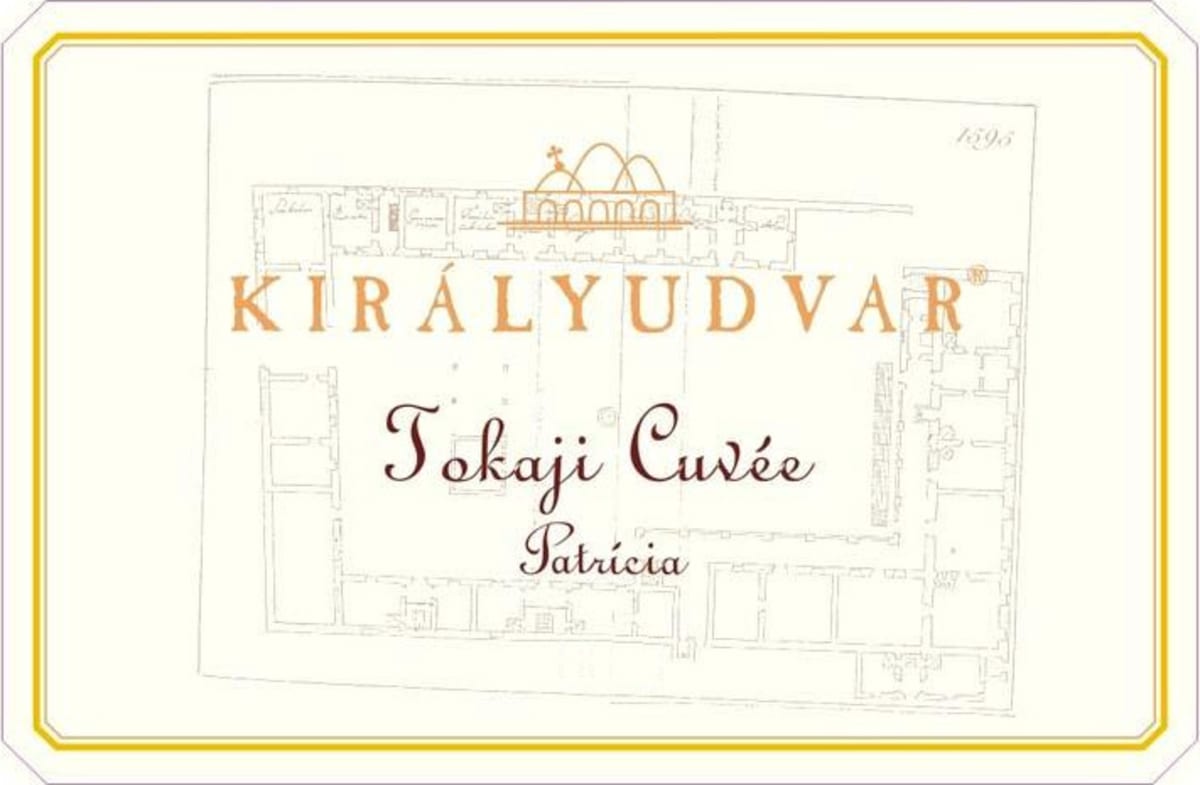Kiralyudvar Tokaji Cuvee Patricia 2012
-
Robert
Parker


Product Details
Your Rating
Somm Note
Winemaker Notes
Professional Ratings
-
Robert Parker's Wine Advocate
The golden, sightly orange colored 2012 Tokaji Cuvée Patrícia is unmistakably Muscat (Muskotály in Hungarian), a floral, ethereal Tokaji noble late-harvest wine entirely sourced in the Danczka vineyard with its characteristic heavy clay soils. On the palate, this is such a delicate, fresh and light-footed sweet wine—10% alcohol—with amazing finesse and After-Eight notes. The tannins are nobly bitter yet fine and grippy, and the dark chocolate flavors intermixed with dark mint flavors are just fabulous. The finish is long, firm, salty and full of mineral tension but also finesse. This Muscat is like Mozart's Night Serenade: playful but seriously seductive. The wine was fermented and aged for seven months in 225-liter Hungarian oak barrels. Tasted in February 2019.


Just a few months after his visit, Tony purchased this estate, which for centuries had supplied Imperial wine to the Hapsburgs. The famed Tokaj winemaker Ivan Szepsy became Tony's partner, helping him rehabilitate the vineyards, while the chateau itself was rebuilt.
With time, Szepsy departed, and Tony assumed the reins full-time. Along the way, he was counseled by Noël Pinguet of the Loire Valley's greatest Vouvray producer, Domaine Huët, of which Tony is also a partner. Noël's collaboration would prove invaluable, particularly his advice to convert the estate to biodynamic viticulture.
Today, Tony is rekindling the legacy of this providential wine region. But he's not stopping there, having recognized, that Tokaj's historic grape varieties, with their viscous intensity and bright acidity, could produce world-class dry, demi-sec, and sparkling wines.

While Muscat comes in a wide range of styles from dry to sweet, still to sparkling and even fortified, it's safe to say it is always alluringly aromatic and delightful. The two most important versions are the noble, Muscat Blanc à Petits Grains, making wines of considerable quality and Muscat of Alexandria, thought to be a progeny of the former. Somm Secret—Pliny the Elder wrote in the 13th century of a sweet, perfumed grape variety so attractive to bees that he referred to it as uva apiana, or “grape of the bees.” Most likely, he was describing Muscat.

Best known for lusciously sweet dessert wines but also home to distinctive dry whites and reds, Hungary is an exciting country at the crossroads of tradition and innovation. Mostly flat with a continental climate, Hungary is almost perfectly bisected by the Danube River (known here as the Duna), and contains central Europe’s largest lake, Balaton. Soil types vary throughout the country but some of the best vines, particularly in Tokaj, are planted on mineral-rich, volcanic soil.
Tokaj, Hungary’s most famous wine region, is home to the venerated botrytized sweet wine, Tokaji, produced from a blend of Furmint and Hárslevelű. Dry and semi-dry wines are also made in Tokaj, using the same varieties. Other native white varieties include the relatively aromatic and floral, Irsai Olivér, Cserszegi Fűszeres and Királyleányka, as well as the distinctively smoky and savory, Juhfark. Common red varieties include velvety, Pinot Noir-like Kadarka and juicy, easy-drinking Kékfrankos (known elsewhere as Blaufränkisch).
